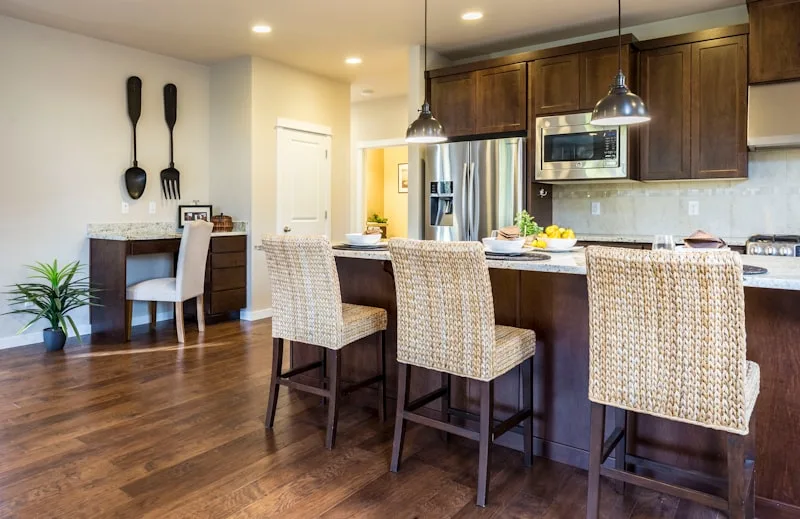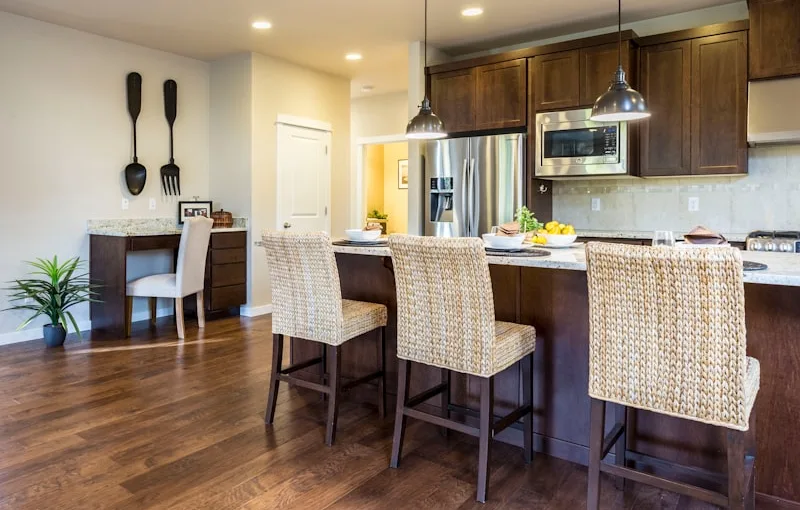First off, you’ll want to start with clean, prepped cabinets. Think of this as giving your cabinets a spa day. Remove any grease or grime with a good cleaner, and then sand them lightly. This step is crucial because it helps the glaze stick better, just like how a good primer helps paint adhere.
Next, choose your glaze. You can go for a clear glaze to enhance the wood grain or a tinted one to add a splash of color. It’s like choosing the right outfit for a special occasion—pick something that complements your style! Once you’ve got your glaze, it’s time to apply it. Use a brush or a rag, depending on the look you’re going for. If you want a more rustic vibe, a rag can give you that soft, worn-in feel.
Now, here’s where the magic happens: after applying the glaze, wipe off the excess. This is where you can play around with how much color you want to show through. It’s like sculpting; you’re revealing the beauty beneath. Let it dry completely, and if you’re feeling adventurous, you can even add a second coat for a richer finish.
Finally, seal the deal with a clear topcoat. This step protects your hard work and gives your cabinets a lovely sheen. Just like that, you’ve turned your kitchen into a stylish haven! So, are you ready to give your cabinets the glow-up they deserve?
Transform Your Kitchen: A Step-by-Step Guide to Glazing Cabinets Like a Pro
First things first, gather your supplies. You’ll need a good quality glaze, a brush, some rags, and a bit of sandpaper. Think of this as your toolkit for a mini kitchen revolution. Once you’ve got everything, start by prepping your cabinets. This means cleaning them thoroughly and lightly sanding the surfaces. It’s like giving your cabinets a spa day—removing the old grime and making them ready to shine!
Next up, it’s time to apply the glaze. Dip your brush into the glaze and start painting it on, working in small sections. Don’t worry about being perfect; the beauty of glazing is in its imperfections. It’s like adding a splash of personality to your cabinets! Use a rag to wipe off any excess glaze, allowing the wood grain to peek through. This step is crucial because it creates that stunning depth and character.
Now, let’s talk about drying time. Patience is key here! Allow the glaze to dry completely before applying a second coat if you want a more intense look. Think of it as layering your favorite outfit—sometimes, one layer just isn’t enough!
The Art of Glazing: Elevate Your Kitchen Cabinets with These Expert Tips
First off, think of glazing as a way to add depth and character to your cabinets. Imagine your cabinets as a blank canvas, just waiting for a splash of color and texture. Glazing involves applying a translucent layer over your base coat, which enhances the details and grain of the wood. It’s like putting on a pair of stylish glasses that make everything pop!

Now, you might be wondering how to get started. The key is preparation. Clean your cabinets thoroughly and make sure they’re free of grease and grime. It’s like prepping a surface before painting; you wouldn’t want to paint over dirt, right? Once they’re clean, choose a glaze that complements your base color. Whether you’re going for a rustic look with a dark walnut glaze or a sleek modern vibe with a light gray, the choice is yours!
Next, apply the glaze with a brush or cloth, working it into the crevices. Think of it as giving your cabinets a gentle massage, allowing the glaze to settle into every nook and cranny. Don’t rush this step; take your time to ensure an even application. And remember, less is more! You can always add more glaze, but it’s tough to take it away once it’s on.
From Drab to Fab: How Glazing Can Revitalize Your Kitchen Cabinets
Glazing is like giving your cabinets a fresh coat of personality. Imagine your cabinets as a blank canvas, and glazing is the vibrant paint that brings them to life. It’s a technique that adds depth and character, enhancing the natural beauty of the wood while hiding imperfections. Think of it as a filter for your kitchen—just like how a good Instagram filter can make a photo pop!
So, how does it work? Glazing involves applying a semi-transparent layer over your painted or stained cabinets. This layer seeps into the grooves and crevices, creating a stunning contrast that highlights the craftsmanship of your cabinetry. It’s like adding a touch of magic that makes your kitchen feel warm and inviting. Plus, it’s a DIY project that you can tackle over a weekend, making it a fun and rewarding experience.
Now, you might be wondering about the colors. The beauty of glazing is that you can choose from a variety of shades to match your style. Whether you prefer a rustic, farmhouse vibe or a sleek, modern look, there’s a glaze out there for you. Just picture your cabinets glistening under the kitchen lights, radiating charm and elegance.
So, if you’re ready to breathe new life into your kitchen, glazing might just be the secret ingredient you’ve been searching for. It’s an easy, cost-effective way to elevate your space and make it feel like home again. Why settle for ordinary when you can have extraordinary?
Glazing 101: Everything You Need to Know to Achieve a Stunning Finish
First off, glazing isn’t just for pottery; it’s a game-changer in painting and finishing woodwork too. Think of it as the icing on a cake. You wouldn’t serve a plain cake, right? You’d want that sweet, glossy layer to make it irresistible. Similarly, a good glaze can elevate your furniture or walls from drab to fab.
Now, you might be wondering, “How do I get started?” It’s simpler than you think! Start with a base coat—this is your cake. Once it’s dry, mix your glaze. You can use oil-based or water-based products, depending on the look you’re after. Want a rustic vibe? Go for a darker glaze. For a more modern touch, lighter shades work wonders.
Application is where the fun begins! Use a brush or a rag to apply the glaze, and don’t be afraid to experiment. It’s like painting with a twist; you can layer it on for depth or wipe it off for a subtle effect. Just remember, less is often more. You can always add more, but taking it off can be a hassle.
And here’s a pro tip: always test your glaze on a scrap piece first. It’s like a dress rehearsal before the big show. This way, you’ll know exactly how it’ll look on your final piece. So, roll up your sleeves, grab your materials, and let your creativity flow!
Unlock the Secrets of Cabinet Glazing: Techniques for a Professional Look
First off, think of cabinet glazing as the cherry on top of your cabinetry sundae. It’s that finishing touch that adds depth and character. Imagine your cabinets as a blank canvas; glazing is the paint that brings it to life. The beauty of glazing lies in its versatility. Whether you’re going for a rustic farmhouse vibe or sleek modern aesthetics, there’s a glazing technique that fits the bill.
Now, let’s talk techniques. One popular method is the “wipe-on” glaze. This is where you apply a tinted glaze over your painted or stained cabinets, then wipe off the excess. It’s like giving your cabinets a gentle tan, enhancing their natural beauty without overwhelming them. Want something a bit more dramatic? Try the “brush-on” technique. This involves applying a thicker layer of glaze, allowing it to settle into the grooves and crevices. It’s like giving your cabinets a cozy blanket, making every detail pop!
But wait, there’s more! Don’t forget about color choices. A dark glaze can add a touch of elegance, while a lighter hue can create a fresh, airy feel. Think of it as choosing the right outfit for an occasion; the right glaze can elevate your cabinets from ordinary to extraordinary.
So, are you ready to unlock the secrets of cabinet glazing? With these techniques in your toolkit, you’ll be well on your way to achieving that professional look that leaves everyone in awe.
DIY Delight: How to Glaze Your Kitchen Cabinets Without Breaking the Bank
First things first, glazing is like giving your cabinets a stylish makeover. It adds depth and character, enhancing the wood grain and giving a rich, sophisticated look. Think of it as a filter for your cabinets, similar to how Instagram enhances your photos. You’ll need some basic supplies: a good quality glaze, a brush, and a clean cloth. You can find these at your local hardware store without emptying your pockets.
Now, let’s get our hands a little dirty! Start by cleaning your cabinets thoroughly. Dust and grease are the enemies of a smooth finish. Once they’re squeaky clean, apply a coat of your chosen glaze. Don’t worry if it looks a bit messy at first; that’s part of the charm! Use a brush to work the glaze into the grooves and crevices, then wipe off the excess with a cloth. It’s like giving your cabinets a gentle hug, allowing the glaze to settle into every nook and cranny.
Frequently Asked Questions
What tools do I need to glaze kitchen cabinets?
To glaze kitchen cabinets, you will need a few essential tools: a high-quality brush or foam applicator for even application, a clean cloth for wiping off excess glaze, painter’s tape to protect areas you don’t want to glaze, and a small container for mixing the glaze. Additionally, having sandpaper and a primer can help prepare the surface for better adhesion.
Can I glaze over painted cabinets?
Yes, you can glaze over painted cabinets to enhance their appearance and add depth. Ensure the paint is fully cured, then apply a glaze using a brush or cloth, wiping off excess to achieve the desired effect. This technique can highlight details and create a more sophisticated look.
What is the best type of glaze for kitchen cabinets?
The ideal glaze for kitchen cabinets is typically a water-based or oil-based polyurethane glaze. Water-based glazes are easier to clean up, dry quickly, and emit fewer fumes, making them a popular choice for indoor use. Oil-based glazes provide a durable finish and are better for high-traffic areas. Consider the desired finish, durability, and ease of application when selecting the best glaze for your kitchen cabinets.
How long does it take to glaze kitchen cabinets?
The time required to glaze kitchen cabinets typically ranges from a few hours to a couple of days, depending on the number of cabinets, the complexity of the design, and the drying time of the glaze. Proper preparation and application techniques can help ensure a smooth and efficient process.
How do I prepare my cabinets for glazing?
To prepare your cabinets for glazing, start by cleaning them thoroughly to remove any grease or dirt. Next, sand the surfaces lightly to create a smooth base for the glaze to adhere. Ensure all dust is removed after sanding. If your cabinets have a finish, consider applying a primer to enhance adhesion. Finally, make sure to choose a glaze that complements your desired look and test it on a small area first.
